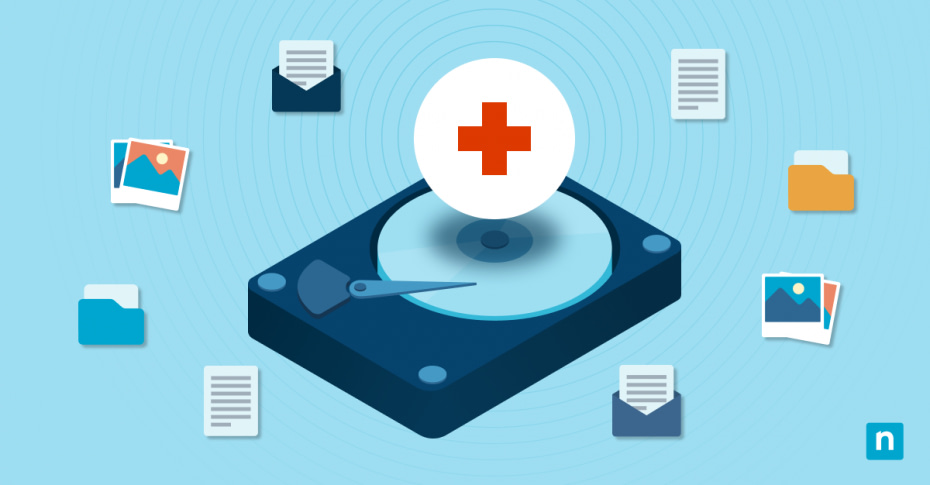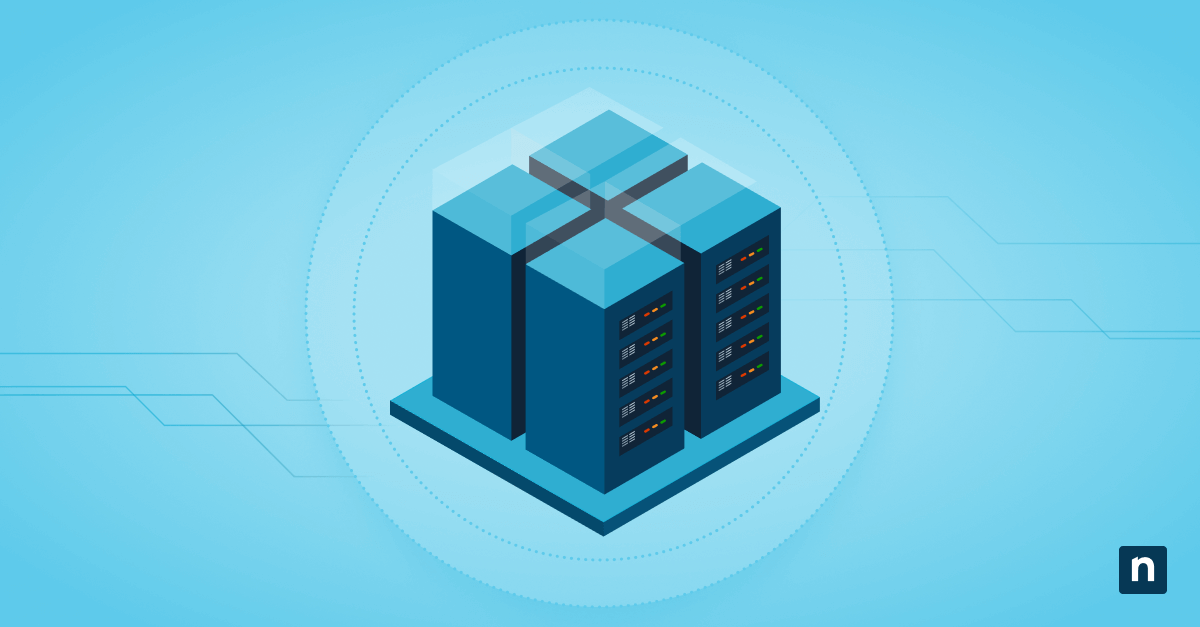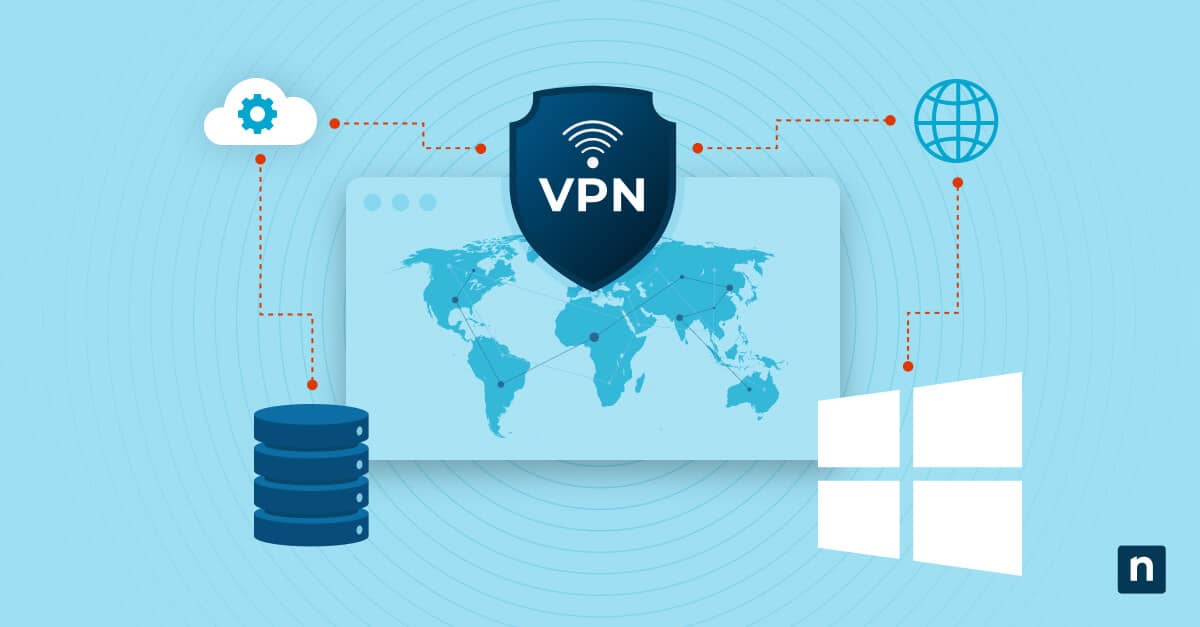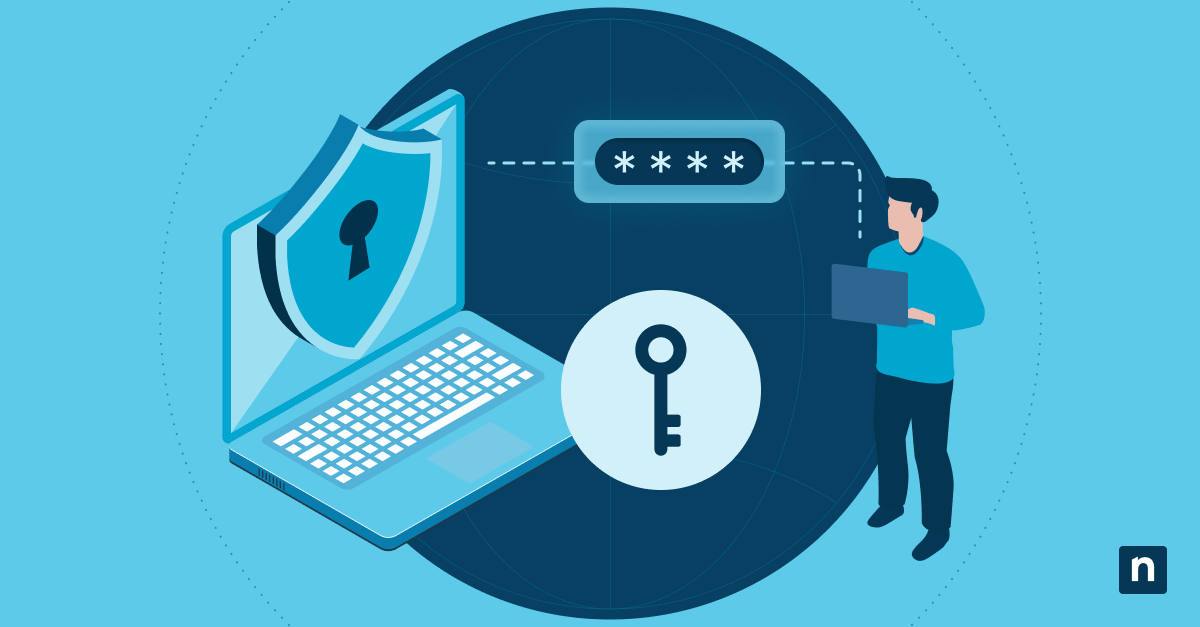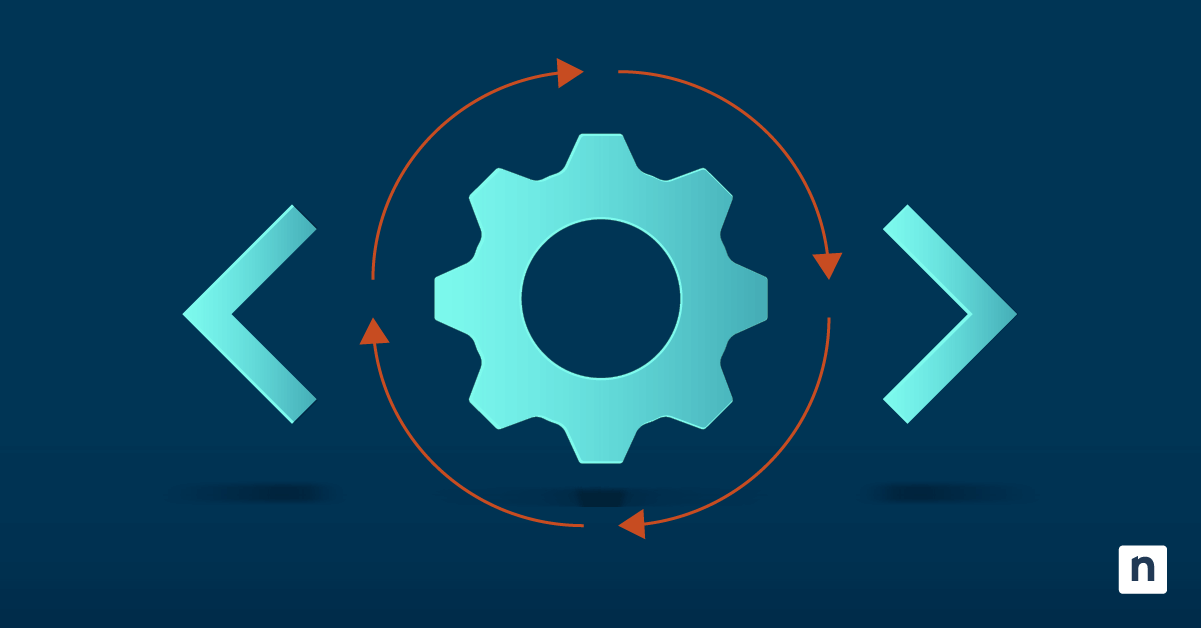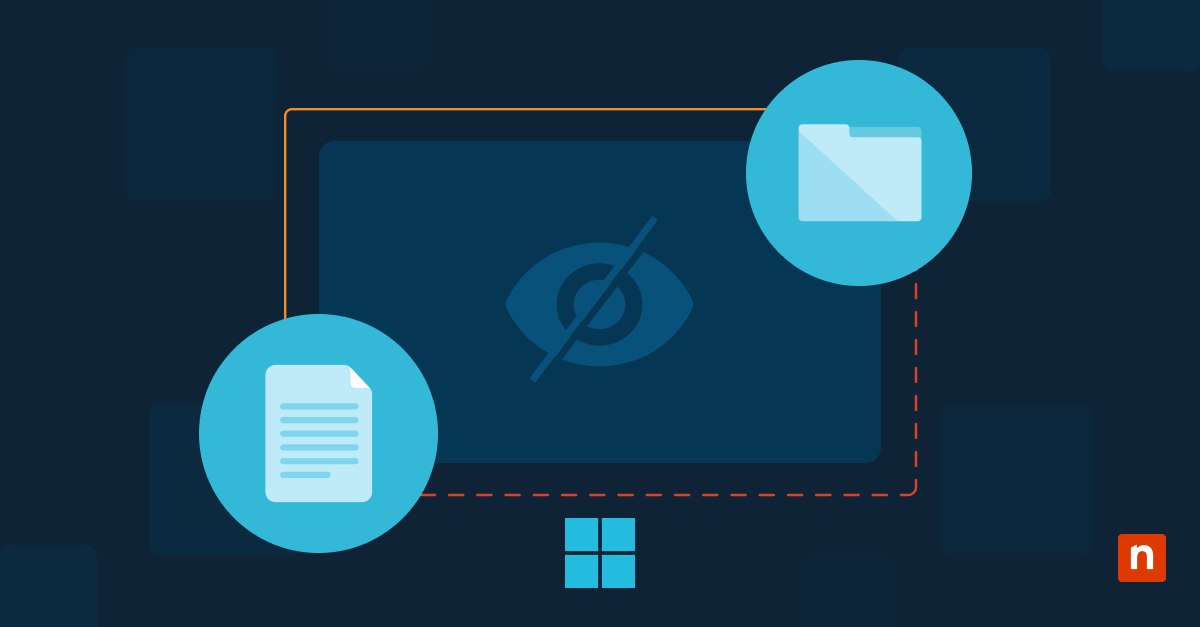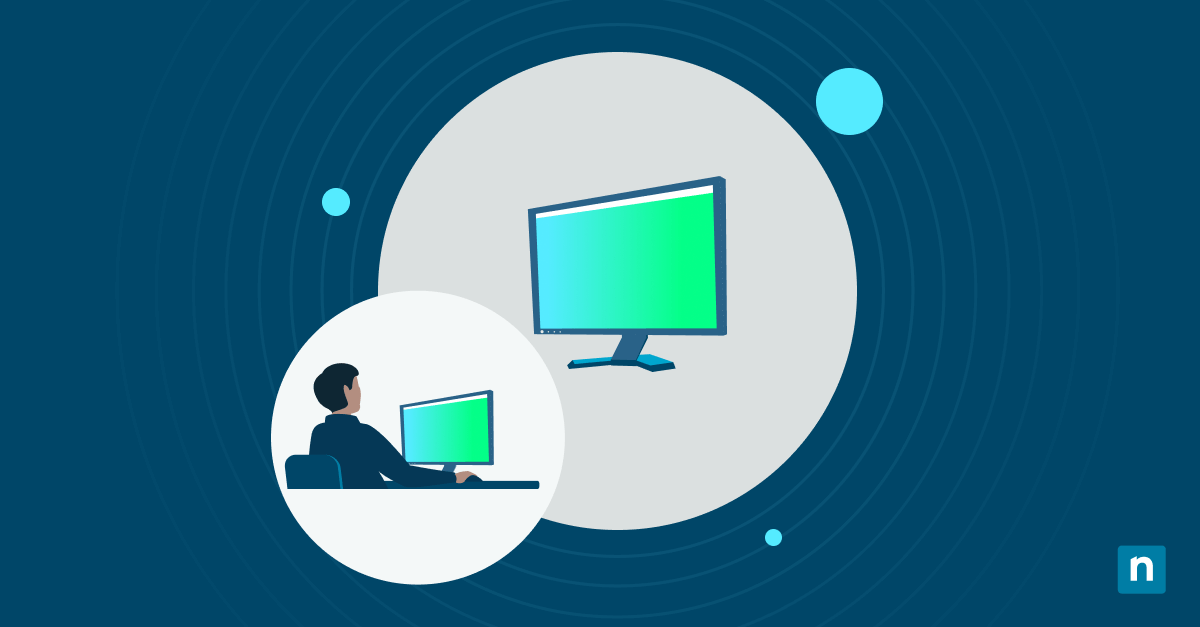Key Points
How to Recover Data from a Dead Hard Drive
-
- Assess the drive:
- Check if BIOS or Disk Management detects it.
- Listen for clicking or grinding sounds.
- Try a different computer or USB-to-SATA adapter.
- Create a backup before recovery attempts.
- Use data recovery software for logical issues:
- Tools like NinjaOne, Recuva, or EaseUS.
- Scan and recover files to a different device.
- Run system tools:
chkdsk /f X:on Windows.- “First Aid” in Disk Utility on macOS.
- Seek professional help for physical damage:
- Clicking sounds, non-detection, failed software recovery.
- Assess the drive:
-
- Freeze the drive (last resort for HDDs only).
The term “dead hard drive” can conjure up images of data that are lost forever. However, the diagnosis is usually not as grim as that. While there are scenarios where essential files are truly “dead,” hard disk drive recovery is possible if you take the proper steps.
This guide provides easy-to-follow steps on how to recover data from a dead hard drive. We also discuss what a hard drive is, how hard drive failures happen, and other essential details.
What this article will cover:
- Steps for hard drive data recovery
- How to get deleted files back from the hard drive
- How to backup deleted files from a hard disk
- Understanding hard drives
- Understanding hard drive failures
- Recovery software for hard drives
- On open-source vs. commercial data recovery software
- Additional recovery fixes
Secure business-critical data with NinjaOne’s Data Recovery software.
Steps for hard drive data recovery
If you suspect your hard drive is dead, follow these steps for HDD data recovery:
1. Assess the situation
-
- Check if the drive is detected in the BIOS or Disk Management.
- Listen for unusual noises that might indicate physical failures.
- If you notice any suspicious noises or if you’re encountering performance issues, stop using your computer immediately.
- Make sure you unplug your hard drive from your computer, if possible.
- Try connecting the hard drive to a different computer or using a different cable.
- Use a USB-to-SATA adapter to check if the drive is accessible externally.
2. Create a backup
If you can, use a tool like NinjaOne for data recovery and data backup.
Other hard disk drive recovery resources that we recommend reading during this step:
- What is Backup and Disaster Recovery and Why Do You Need It?
- Complete Guide to Data Backup & Recovery
- How to Backup Files and Documents for Your Organization
- 8 Best Data Backup and Recovery Software for 2024
3. Try software-based recovery (for logical failures)
If your hard drive is recognized but files are missing, use data recovery hard drive software to scan and retrieve data.
- Connect the hard drive to a working computer as an external drive. Make sure that you disconnect or eject the original hard drive from your system.
- Run a deep scan using hard drive data recovery software like NinjaOne.
- Recover and save files to a separate storage device.
4. Use Command Prompt recovery methods
For minor file system errors, built-in Windows and macOS tools can sometimes restore access to your data:
- Windows users can open Command Prompt and run chkdsk /f X: (replace X with the drive letter) to fix errors.
- Mac users can use Disk Utility’s “First Aid” function to repair corrupted drives
5. Use professional data recovery services (for physical failure)
If your hard drive is physically damaged, DIY methods may worsen the problem. Professional HDD data recovery services have specialized tools and cleanroom environments to extract data safely.
Seek professionals if:
- The drive makes clicking sounds.
- The drive is not detected at all.
- Software recovery tools fail to retrieve data.
6. Freeze the hard drive (last resort for physical failures)
Although not always effective, some users have reported success with freezing a malfunctioning hard drive for a few hours before attempting to access it again. This may temporarily fix mechanical issues and allow for partial data recovery. However, this should only be tried as a last resort and not for SSDs.
7. Prevent further data loss
Once you’ve successfully performed hard disk drive recovery, it’s crucial to prevent future losses by following these best practices:
- How to get deleted files back from the hard drive: Regularly use file recovery tools to retrieve lost files before they are overwritten.
- How to backup deleted files from a hard disk: Utilize cloud storage or external drives to keep a secondary copy of your important data.
- Create a consistent backup schedule to avoid future data loss.
Recap of general data recovery steps
Recovering data from a dead hard drive is a process that must be approached methodically so you avoid damaging the data or losing it completely. The standard steps for hard disk drive recovery are:
- Determine the type of failure (physical, electrical, or logical) to choose the appropriate recovery method.
- Assess the severity of the failure and consider seeking professional help if unsure.
- Create a safe work environment with the necessary tools and storage capacity.
- Use specialized recovery software.
- Follow the hard drive data recovery process as listed earlier.
How to get deleted files back from the hard drive
Contrary to popular belief, there are steps on how to get deleted files back from a hard drive, as long as they have not been overwritten.
First, stop using the affected drive immediately to prevent new data from being written over the deleted files. Then, use hard drive data recovery software to scan the drive and retrieve lost files. If the deleted files are not found with any software solution, it may be a good idea to check the Recycle Bin or use Windows’ File History or Mac’s Time Machine.
For more complex cases where deleted files are not recoverable through software, professional HDD data recovery services can attempt to retrieve lost data using advanced techniques. However, success rates decrease if the drive has been heavily used after file deletion. We recommend acting quickly and using reliable recovery tools to increase your chances of recovery.
How to backup deleted files from a hard disk
Similarly, there are steps you can take if you’ve been searching for “how to backup deleted files from a hard disk”.
The best approach is to use automatic backup solutions like cloud storage services (Google Drive, Dropbox, OneDrive) or external drives. Regularly scheduling backups can help prevent data loss and provide an easy way to restore deleted files.
For those who prefer local storage, creating a system image or using file versioning tools can safeguard deleted files. Windows users can enable File History or create restore points, while Mac users can use Time Machine. Another strategy is to clone your data recovery hard drive periodically so that even if files are deleted, a backup copy remains accessible. By implementing these backup methods, you can minimize the risks associated with accidental file deletion and ensure hard disk drive recovery is always possible when needed.
Understanding hard drives
A hard drive is a fundamental component of modern computing systems that stores and retrieves digital data. It operates on electromagnetic principles and consists of several major components, each with failure conditions and possible recovery options.
The heart of the hard drive is the platter – a circular, rotating metal disk coated with a magnetic material. Data is stored on this platter in the form of magnetic patterns by an actuator arm equipped with read/write heads, hovering just above the surface of the spinning platter but never touching. When data is read or written, the arm positions the heads accurately to read or modify the magnetic patterns. The drive’s spindle motor spins the platters at high speeds, typically between 5,000 and 15,000 RPM.
The logic board acts as the brain of the hard drive, controlling data flow between the computer and storage medium, converting digital signals into magnetic patterns and vice versa. Through this intricate process, hard drives efficiently store and retrieve vast amounts of data.
Understanding hard drive failures
In general, there are five common reasons why a hard drive can become “dead”:
1. Physical damage
Physical damage is the most common reason a hard drive may become unresponsive. This occurs when the drive is dropped, experiences significant impact, or internal components, such as the read/write head or spindle motor, become misaligned or broken.
As its name suggests, physical damage affects the material aspects of a hard drive. A physically damaged drive may produce clicking, grinding, or beeping sounds, indicating its mechanical parts are malfunctioning. In the most severe cases, you may need specialized equipment for HDD data recovery.
- Spindle motor failure: If your drive is powering up but not spinning, your spindle motor might be burned out. Consider replacing it with a motor from a working drive of the same model.
- Physical impact, drop damage, or other misalignment: When plugged in, your disk likely makes clicks, grinding noises, or screeching noises. Chances are the platters and read/write heads are grinding on each other, which is just making the damage worse. Don’t plug it in, and get in touch with a professional.
2. Logical failures
A logical failure occurs when a hard drive’s data becomes inaccessible due to corruption, accidental deletion, or malware infections. This type of failure can be caused by abrupt power losses while data is being written, resulting in corrupted file systems. Sometimes, an operating system update or driver issue can also lead to a logical failure where the hard drive is detected, but files appear missing or unreadable
If your data recovery hard drive suffers a logical failure, it is crucial to stop using it immediately to avoid overwriting lost data. Running HDD data recovery software from another device may help retrieve missing files before they are permanently lost. Logical failures are among the most recoverable types of hard drive issues, provided proper data recovery techniques are used.
3. Electrical failures
Is the disk not powering up or being detected when plugged in? Sometimes, a hard drive’s circuit board experiences component failure or is otherwise damaged electrically, so the drive fails to turn on. Try replacing the hard drive’s logic (circuit) board with an identical one from another drive of the same model.
4. Software failures
Software failures fall into three categories: Operating system corruption, application errors, and user-related issues.
- Operating system corruption: Operating system corruption can happen when something changes the OS files, such as a corrupted update file, encroaching physical hard drive failure, your system overheating, or a malware attack. Certain viruses overwrite your hard drive’s boot sector, causing a disk to fail to boot but leaving most of the data recoverable.
- Application errors: Programming bugs or other application errors can lead to bad data being written to disk. System memory (RAM/swap) can also get overwritten that way, compromising subsequent data writes to disk. Keep backups and test them, doubly so if you are rolling out untested or potentially buggy software in production environments.
- User-related issues: Most data loss happens at the endpoints before they are backed up, which means that user devices with people’s work are being damaged, infected, or stolen. Accidental user deletions are a large part of disk recovery work.
Data loss due to virus activity in user-installed software is not a software issue but a user issue. From a treatment perspective, however, this distinction is debatable.
5. Firmware corruption
Firmware is the embedded software that allows a hard drive to communicate with a computer’s operating system. When firmware becomes corrupted or outdated, the drive may stop functioning altogether.
Firmware failure generally happens due to errors in the firmware of the hard drive circuit board itself, the redundant array of independent disks (RAID) array controller card (if any), or the motherboard’s basic input/output system (BIOS) or integrated serial advanced technology attachment (SATA) chips. It is best avoided by staying current with firmware updates, provided the updates are tested. If unsure, test your disks and backups — before and after firmware updates — for yourself in a lab setup before rolling them out to production, if possible.
Symptoms of firmware corruption include the drive not spinning up, being recognized with an incorrect storage capacity, or showing repeated errors when accessed. Because firmware issues require specialized tools to repair, most users are unable to resolve them on their own. Professional HDD data recovery services may be needed to rebuild the firmware or extract the stored data manually. If you suspect a firmware issue, avoid attempting DIY fixes and instead consult experts to prevent further complications.
Recovery software for hard drives
Choosing the right hard disk drive recovery software is crucial for successful file retrieval. We’ve created a table that compares various recovery solutions based on operating system compatibility, file system support, and recovery capabilities.
| Solution | Operating System | File Systems | Recovery Capabilities | Recovery Scenarios |
| TestDisk | Windows, macOS, Linux | FAT, exFAT, NTFS, EXT2/3/4, XFS | Deleted files, lost partitions, formatted disks | File system repair, partition recovery |
| PhotoRec | Windows, macOS, Linux | Various | Deleted files, lost partitions, formatted disks | Data carving, file system agnostic |
| Recuva | Windows | FAT, NTFS, exFAT | Deleted files, lost partitions, formatted disks | User-friendly interface, good for beginners |
| DiskDrill | Windows, macOS | Various | Deleted files, lost partitions, formatted disks | Powerful scanning engine, good for recovering lost data |
| Pandora Recovery | Windows | FAT, NTFS, exFAT | Deleted files, lost partitions, formatted disks | Excellent recovery rates, good for recovering damaged or deleted data |
| Stellar Data Recovery | Windows, macOS | Various | Deleted files, lost partitions, formatted disks | Wide range of supported file systems, good for recovering data from all types of devices |
| EaseUS Data Recovery Wizard | Windows, macOS | Various | Deleted files, lost partitions, formatted disks | Wide range of supported file systems, good for recovering data from all types of devices |
| Undelete Plus | Windows | FAT, NTFS | Deleted files | Simple to use, good for recovering deleted files |
| FreeRecover | Windows | NTFS | Deleted files | Free and open source, good for recovering deleted files |
| ddrescue | Linux | Various | Damaged disks, bad sectors | Damaged disks recovery |
| Scalpel | Linux | Various | Deleted files, raw filesystems | File carving tool, good for recovering deleted files from damaged disks |
| ext4magic | Linux | EXT3/EXT4 | Deleted files, lost partitions | File system repair tool, good for recovering data from damaged EXT3/EXT4 file systems |
| Btrfs / ZFS | Linux | Btrfs / ZFS | Deleted files, lost partitions | Data recovery capabilities built into the file system |
| EXT4 / ReiserFS | Linux | EXT4 / reiserfs | Deleted files, lost partitions | Data recovery capabilities built into the file system |
| MondoRescue | Linux, Windows | Various | Deleted files, lost partitions, formatted disks | Disaster recovery tool, can back up and restore entire systems |
On open-source vs commercial data recovery software
The choice between open-source and commercial options ultimately depends on the specific requirements and preferences of the user. There are a few reasons why some may prefer open-source data recovery software in comparison to commercial data recovery software:
- Cost: The most apparent advantage is that open-source software is typically free to use, whereas commercial data recovery solutions often come with a price tag. Free software makes open-source options more accessible for budget-constrained users.
- Transparency: Open-source software’s source code is openly available, allowing users to inspect and verify its functionality. This transparency builds trust and ensures the software includes no hidden malicious components.
- Community support: Open-source projects often have active and dedicated communities of developers and users who collaborate, provide feedback, and contribute to improving the software. This community support can lead to faster bug fixes, updates, and improvements.
- Flexibility and customization: Open-source software allows users to modify and customize the code to suit their specific needs or to add features that might be lacking in the original software.
- Longevity: Commercial software products may be discontinued or have limited support over time, while open-source projects tend to have a higher chance of continued development and maintenance due to active community involvement.
- Cross-platform support: Many open-source data recovery tools are designed to work across various operating systems, providing more versatility for users with different setups.
Don’t let hard drive failures catch you off guard by protecting your data with NinjaOne.
Additional recovery fixes
Addressing data corruption issues
Data corruption can manifest as errors, crashes, or files becoming inaccessible. Unusual behavior, frequent system freezes, or unexpected errors during file access may indicate data corruption.
If data loss is caused by driver-related software issues, reinstalling or updating drivers can often resolve the problem and recover the data. Firmware updates can also sometimes resolve driver issues.
Open-source data recovery software like TestDisk or PhotoRec can help repair corrupted files by identifying and reconstructing damaged file structures. They attempt to salvage data by analyzing and recovering intact portions of corrupted files. Mac users can also use the built-in Disk Utility’s First Aid feature to check and repair disk permissions and file system errors. It can help resolve common issues and recover data from minor file system problems.
Ransomware and malware attacks can encrypt or lock data and demand ransom for its release. Open-source ransomware recovery tools like the No More Ransom project provide decryption keys for specific ransomware strains, allowing affected users to recover their data without paying the ransom.
Hard drive data recovery services
Professional data recovery services specialize in retrieving lost, corrupted, or inaccessible data from malfunctioning hard drives, solid-state drives, or other storage media. These services employ advanced techniques, specialized tools, and cleanroom environments to recover data safely and efficiently.
You should seek professional data recovery assistance when standard DIY or open-source recovery methods are ineffective or risk worsening the situation. Examples include severe physical damage, unusual noises emanating from the drive, failure to detect the drive, or if valuable data is at stake. Attempting DIY recovery without expertise could also potentially lead to permanent data loss.
When selecting a data recovery service, consider factors such as the provider’s reputation, experience, success rate, security measures, confidentiality guarantees, pricing structures, and the extent of their customer support. A reliable service provider will typically offer free evaluations, transparent communication throughout the process, and ‘No Data, No Charge’ policies to ensure you only pay if data is successfully recovered.
Automate backups and recover files easily with NinjaOne Cloud Backup Solution
Safeguard your data with NinjaOne Cloud Backup Solution
Understanding the complexities of data recovery is a vital part of securing your data. While there are strategies for this process, the best way to prevent data loss is still safeguarding your data through regular backups and robust security measures. NinjaOne Cloud Backup eases the intricacies of potential hard drive failures by monitoring, managing, and automating backups of your endpoints. It also offers multiple recovery methods to ensure business continuity and strengthen data preservation. Employing NinjaOne’s Cloud Backup solution is the best approach for your data management and recovery needs.

